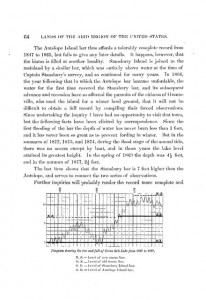I’m about to head off for a few days to watch Lake Mead drop, and for some reason thoughts turned this evening to G.K. Gilbert.
Tomorrow is “blog action day“, and the subject is “water”, a topic about which I’ve had a few things to say of late. I’m frankly not all that excited about blog action, having that peculiarly annoying “view from nowhere” mind set of a journalist. But really, that’s a copout. The whole point of “action” for me is to encourage better understanding of things I think are important, so here’s one.
Sometimes it’s wet. Sometimes it’s dry. Sometimes the “sometimes” in those sentences involves days or weeks or months, but sometimes it involves decades.
That’s the great insight of G.K. Gilbert, about whom I’ve written before. In the 1870s, he gathered records about when Mormons could get their sheep out the peninsula to Antelope Island in the Great Salt Lake (when the lake was low) and when they couldn’t (when the lake was high). The result was a record of decadal-scale climate variability – the droughts and pluvials that are a defining characteristic of life in the arid western United States. This is the best image I could find, sorry for the poor image quality, of Gilbert’s graph:


That’s a great Gilbert quote. Thanks for sharing it.
Anne – Thanks for the comment. So is Gilbert a big deal person in the history of your field? I know very little about him other than this remarkably clever and insightful little paleoclimate reconstruction.